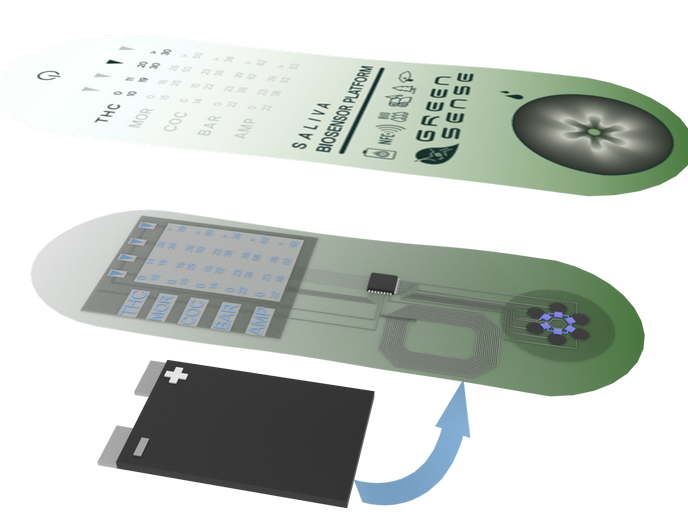Biosensing: a paper-based drug detection platform
Discarded electronics are a fast-growing source of waste, and about half of the plastic waste from electronic and electrical equipment(opens in new window) in the EU is not recycled properly or at all. Paper-based electronics are an active area of research, and the first products are entering the market. However, the surface properties of conventional paper are not suitable for printed electronics. Plastic coatings are typically required, minimising the realised benefits. Cellulose, a major structural component of green plant cell walls and one of nature’s most ubiquitous polymers, could be the key to electronics based on paper. The EU funded GREENSENSE project has developed nanocellulose-based films, coatings and inks and semi-automated manufacturing processes leading to novel cellulose-based biosensing platforms for drugs of abuse (DOA) analysis. The 17-member GREENSENSE consortium, with participants from six EU countries, Israel, Jordan and the United Kingdom, combined expertise in materials science, physics, biochemistry and electronics. It supported the team in focusing not only on the materials and processes to produce nanocellulose-based electronics but also on meeting international standards for printed electronics and on the ability to upscale all processes for commercial production.
Nanocellulose-based films, coated paper boards, inks and electronic components
The consortium produced several types of functionalised cellulose nanofibres and cellulose nanocrystals with the potential to produce tonnes per year. From these materials, free-standing nanocellulose films and nanocellulose-coated paper boards were manufactured with large-scale production methods, and their properties were characterised. The team also produced a variety of nanocellulose-based inks (conductive, electrochemical and electrolytic for electrochromic displays and energy storage applications) at up to 50 kilograms/batch. The inks were characterised according to international standards for printed electronics (IEC 62899). “We harnessed our nanocellulose-based materials and production techniques for the design and fabrication of high-performing printed electronic components: near-field communication(opens in new window) antennas, supercapacitors, primary batteries and electrochromic displays. More than 1 500 pieces were produced,” notes project coordinator Sandra Martínez-Crespiera of Leitat(opens in new window).
Nanocellulose-based biosensors and sensing platforms
The work on nanocellulose-based materials, components and processes supported the development of biosensors to detect DOA with a redox-active ink (it can accept or donate electrons in redox reactions, supporting electrochemical sensing) and a hydrogel. The analytical performance of the biosensors was confirmed via rigorous testing. “GREENSENSE developed a microchip with interfaces for the cellulose based biosensor, power management and a radio frequency identification tag. This included the possibility for energy-harvesting to charge connected energy storage systems and displays. The biosensors were integrated into biosensing platforms manufactured at large scale (up to 75 units) by semi-automated processes on substrates approximately 300 x 350 mm2 (8 platforms/sheet),” Martínez explains. The platforms were subjected to mechanical, adhesion and ageing tests according to international standards (IEC 62951), and a smartphone application was developed to enable straightforward operation. Martínez summarises: “In contrast to conventional plastic kits for qualitative urine analysis, the GREENSENSE portable biosensing platform for DOA uses nanocellulose-based electronics and inks and stores numeric data. The platforms will enable us to better monitor illegal and potentially dangerous behaviours, whether for law enforcement or at homes and schools, by using a recyclable piece of paper.”



